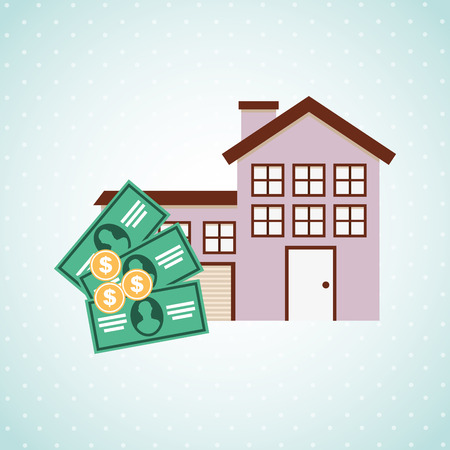Understanding Your Financial Snapshot
Why Your Financial Picture Matters
Buying a home in today’s competitive U.S. real estate market means you need to know exactly where you stand financially before making an offer. Getting your financial house in order gives you more confidence, helps you move quickly, and shows sellers you’re serious.
Key Elements of Your Financial Snapshot
| Aspect | What It Means | Why It Matters |
|---|---|---|
| Credit Score | A three-digit number that shows how reliably you’ve managed debt in the past. | Lenders use this to decide your loan terms and interest rate. Higher scores usually mean better deals. |
| Debt-to-Income Ratio (DTI) | The percentage of your monthly income that goes toward paying debts. | This ratio helps lenders see if you can handle a new mortgage payment on top of existing bills. |
| Savings & Cash Reserves | The amount of money you have set aside for down payment, closing costs, and emergencies. | You’ll need enough savings to cover upfront costs and show lenders you’re financially stable. |
How to Analyze Each Area
1. Check Your Credit Score
Get a free report from the major credit bureaus (Experian, Equifax, TransUnion). Most lenders look for a score of at least 620, but higher is better if you want the best rates.
2. Calculate Your Debt-to-Income Ratio
Add up all your monthly debts (car payments, student loans, credit cards) and divide by your gross monthly income. Ideally, your DTI should be below 43% for most loan programs—lower is even better in hot markets.
3. Review Your Savings
Tally up what you have saved for a down payment and other expenses like closing costs or moving fees. In competitive markets, having extra cash reserves can make your offer stand out or help cover an appraisal gap if needed later on.
Your True Buying Power: A Quick Reference Table
| Your Info | Lender Expectations (Typical) | Competitive Market Tips |
|---|---|---|
| Credit Score | 620+ minimum; 740+ for best rates | Aim as high as possible; check for errors and pay down debts to boost your score fast. |
| DTI Ratio | <43% preferred by most lenders | The lower the better; pay off small debts before applying if possible. |
| Savings/Reserves | At least 3-6 months’ expenses after closing; 5-20% down payment recommended | Bigger reserves show strength; plan for appraisal gaps or bidding wars with extra funds. |
Understanding these factors puts you in control and ensures you’re ready to act fast when the right home hits the market.
The Power of Mortgage Pre-Approval
Why Pre-Approval Matters in a Hot Market
In today’s competitive U.S. real estate market, simply being interested isn’t enough—sellers want buyers who are ready to move fast. That’s where mortgage pre-approval comes in. Unlike pre-qualification, which is more of a quick estimate based on self-reported info, pre-approval means a lender has actually reviewed your credit, income, and assets. This gives you—and the seller—real confidence that you can secure financing.
Pre-Qualification vs. Pre-Approval: What’s the Difference?
| Pre-Qualification | Pre-Approval | |
|---|---|---|
| What it is | Initial estimate of what you might afford | Formal review of finances and credit by a lender |
| Process | Self-reported info; usually online or over the phone | Requires documentation and credit check; more thorough |
| Strength in Offers | Sellers may not take it seriously | Makes your offer stand out as strong and reliable |
| Time Commitment | Quick (minutes to hours) | Takes longer (days), but worth it for serious buyers |
The Real Edge: Why Sellers Love Pre-Approved Buyers
Sellers know deals fall through when buyers can’t get financing. When you submit an offer with a pre-approval letter attached, it tells the seller you’re not just browsing—you’re ready and able to buy. In multiple-offer situations, this can be the difference between getting your dream home or missing out.
Selecting the Right Lender for You
Not all lenders are created equal, and choosing one that fits your unique needs can save you money and stress down the line. Here are a few things to keep in mind:
- Interest Rates & Fees: Compare rates, closing costs, and lender fees—it pays to shop around.
- Communication Style: Some lenders have slick apps and quick updates; others prefer old-school phone calls. Pick what works for you.
- Speed: In a fast-moving market, choose a lender known for quick turnarounds on pre-approvals and closings.
- Local Experience: Lenders familiar with your area may have better insights into local requirements or programs.
- Lender Reputation: Ask your real estate agent for recommendations—they often know who gets deals done smoothly.
Your Next Move: Get Pre-Approved Early
If you’re thinking about buying soon, start gathering your paperwork now—think pay stubs, tax returns, bank statements, and anything related to your finances. Reach out to a couple of lenders and see who feels like the right fit. Getting pre-approved early gives you peace of mind and puts you in a power position when it’s time to make an offer.

3. Budgeting for More Than the Price Tag
When you’re gearing up to buy a home in a competitive U.S. market, it’s tempting to focus only on the sticker price—the number you see on Zillow or Redfin. But your true budget should stretch beyond that headline number. Think of it like shopping for a new car: the price tag doesn’t include sales tax, insurance, or registration fees. Similarly, buying a home comes with extra costs that can catch you off guard if you’re not prepared.
Looking Past the Listing Price
To make sure you’re financially set for your purchase, include these key expenses in your budget:
- Closing Costs: These are fees paid at the end of your real estate transaction—covering things like lender charges, title insurance, escrow fees, and more. In most parts of the U.S., closing costs usually add up to about 2–5% of the home’s purchase price.
- Earnest Money Deposit: This is a good faith deposit you put down when making an offer. It shows sellers you’re serious and typically ranges from 1–3% of the offer price. If your offer is accepted, this money goes toward your down payment or closing costs.
- Moving Expenses: Whether you’re hiring movers or renting a truck and doing it yourself, moving costs can sneak up fast—especially if you’re relocating across state lines.
Budget Breakdown: What Should You Plan For?
| Expense | Typical Amount/Range | Description |
|---|---|---|
| Home Purchase Price | $350,000 (example) | The listing price of your chosen property. |
| Down Payment | 3%–20% ($10,500–$70,000) | Your upfront contribution toward the home’s cost; varies by loan type. |
| Closing Costs | 2%–5% ($7,000–$17,500) | Lender fees, appraisal, title search, insurance, taxes, and more. |
| Earnest Money Deposit | 1%–3% ($3,500–$10,500) | A good faith deposit; often applied to final closing costs or down payment. |
| Moving Expenses | $1,000–$4,000+ | Packing supplies, movers/truck rental, travel expenses. |
| Appraisal Gap Coverage (if needed) | Varies (potentially several thousand dollars) | If your appraisal comes in lower than offer price and you need to cover the difference. |
Sneaky Extras to Watch Out For
Apart from these main categories, remember to leave some wiggle room in your budget for things like utility deposits, initial repairs or upgrades, and even takeout meals while your kitchen is boxed up. A little extra padding helps keep surprises from derailing your plans.
The Bottom Line: Be Ready Before You Shop
If you plan ahead for more than just the sticker price—and factor in every potential cost—you’ll be able to shop with confidence and avoid last-minute stress. Setting a realistic total budget puts you in a strong position to compete in today’s fast-paced housing market without overextending yourself.
4. Making Strategic Offers in a Seller’s Market
Crafting Clean and Competitive Offers
In today’s fast-paced real estate market, it’s not enough to just have your finances in order—you need to make your offer stand out from the crowd. Sellers are looking for offers that are not only strong but also simple and hassle-free. This is where crafting a “clean” offer comes into play. Here’s how you can position yourself as the buyer sellers want to work with:
Key Strategies for a Winning Offer
| Strategy | What It Means | Why It Works |
|---|---|---|
| Escalation Clause | This clause automatically increases your offer by a set amount if another higher offer comes in—up to your max limit. | Keeps you competitive without going over your budget or getting caught in a bidding war you can’t afford. |
| Waived Contingencies | You agree to skip some standard “outs” (like inspection or financing contingencies) to speed up closing and reduce risk for the seller. | Makes your offer more attractive since the sale is less likely to fall through, but be sure you understand the risks! |
| Flexible Timelines | You adapt your closing date or move-in schedule to what works best for the seller. | Shows you’re easy to work with and willing to meet the seller’s needs, giving you an edge over other buyers. |
| Appraisal Gap Coverage | If the home appraises below your offer price, you agree upfront to cover some or all of the difference with cash. | Offers sellers peace of mind that the deal won’t fall apart over an appraisal issue—a common concern in hot markets. |
Tips for Structuring Your Offer
- Limit Contingencies: Only include what’s absolutely necessary. The fewer hoops for sellers, the better.
- Add a Personal Touch: Sometimes a heartfelt letter about why you love the home can tip the scales—especially in family neighborhoods.
- Stay Realistic: Don’t waive protections (like inspections) unless you’re 100% comfortable with the risks involved.
- Show Proof of Funds: Attach a pre-approval letter and bank statement so sellers know you’re serious and ready to close.
Pro Tip: Consult Your Agent First!
Your real estate agent knows what local sellers value most. Before making any major decisions—like waiving contingencies—ask your agent for advice based on current market trends in your area.
5. Navigating the Appraisal Gap
Understanding the Appraisal Gap
In today’s ultra-competitive real estate market, homes often sell above their asking price. This can lead to a common challenge: the appraisal gap. An appraisal gap happens when your offer is higher than what the bank’s appraiser says the home is worth. Lenders will only give you a mortgage based on the appraised value, not your agreed purchase price. That means you may need to cover the difference out-of-pocket if you still want the house.
What Is an Appraisal Gap Clause?
An appraisal gap clause is a special part of your offer that lets the seller know you’re willing—and able—to cover a certain amount of shortfall between the appraised value and your offer price. Including this clause can make your bid stand out in a crowded market, but it also means you need to be financially ready.
How Does It Work?
| Scenario | Appraised Value | Offer Price | Your Additional Payment Needed |
|---|---|---|---|
| No Appraisal Gap Clause | $400,000 | $420,000 | $20,000 (risk seller rejects offer) |
| With $10K Appraisal Gap Clause | $400,000 | $420,000 | $10,000 (you pay up to $10K over appraisal) |
| With Full Coverage Clause | $400,000 | $420,000 | $20,000 (you agree to pay full difference) |
Setting Aside Extra Funds for Protection
If you plan to include an appraisal gap clause in your offer, you’ll need extra cash ready—on top of your down payment and closing costs. Here are some tips:
- Review Your Savings: Make sure you have enough liquid funds for both your down payment and any potential appraisal shortfall.
- Avoid Overextending: Only commit to an amount you can truly afford if there’s an appraisal gap.
- Talk to Your Lender: Ask about programs or loan options that might help if an appraisal comes in low.
Structuring Your Offer for Maximum Protection
You want to be competitive without putting yourself at risk. Consider these strategies:
- Cap Your Appraisal Gap Coverage: Specify exactly how much extra you’re willing to pay above the appraised value. For example: “Buyer agrees to cover up to $10,000 over appraised value.”
- Add Contingencies Carefully: Work with your real estate agent to balance being attractive to sellers while keeping financial safety nets in place.
- Document Everything: Make sure all terms about appraisal gap coverage are clearly written into your contract so there’s no confusion later.
Quick Comparison: Appraisal Gap Strategies
| Strategy | Pros | Cons |
|---|---|---|
| No Clause Included | No extra cash needed if deal falls through; less financial risk. | Your offer may be less competitive; risk losing the home. |
| Capped Gap Clause ($ Amount Limit) | Makes your offer stronger; limits your out-of-pocket risk. | You may still lose out if another buyer offers a higher cap. |
| No Cap/Full Coverage Clause | Makes your offer extremely strong in bidding wars. | Puts more pressure on your finances; higher risk if appraisal is very low. |
The Bottom Line on Navigating Appraisal Gaps
Navigating appraisal gaps is all about being prepared—financially and strategically. By understanding how these clauses work, setting aside additional funds, and structuring your offer wisely, you’ll be able to confidently compete in today’s hot housing market without putting yourself in a tight spot financially.
6. Leveraging Local Programs and First-Time Buyer Assistance
Why Local Assistance Matters in a Competitive Market
When homes are selling fast and prices are high, every financial advantage counts. Many buyers overlook local programs, grants, tax credits, and specialized loans that can help level the playing field—especially for first-timers. Tapping into these resources can give you extra funds or better loan terms, making your offer more attractive and increasing your buying power.
Types of Assistance You Might Find Locally
Programs vary from state to state and even city to city, but here are some common options:
| Type of Assistance | What It Does | Who Qualifies? |
|---|---|---|
| Down Payment Grants | Gives you money for your down payment that you don’t have to pay back | First-time buyers, income limits may apply |
| Forgivable Loans | A loan for closing costs or down payment that is forgiven if you stay in the home for a set period | Varies by program, often for primary residences only |
| Tax Credits (e.g., MCC) | Lowers your federal tax bill each year as a homeowner | First-time buyers, certain income/price limits |
| Specialized Mortgage Loans (FHA, USDA, VA) | Lower down payments or no down payment; flexible credit requirements | Depends on status (veterans, rural buyers) or income level |
| Local Employer Programs | Your employer helps with closing costs or down payment if you buy nearby | Certain employers or jobs (teachers, healthcare workers, police) |
How to Find These Opportunities in Your Area
- Start with Your State Housing Agency: Every state has an official housing website listing available programs.
- Ask Your Realtor: Agents who know the local market will often have details on city- or county-level assistance.
- Lenders Specializing in First-Time Buyers: Mortgage lenders often have dedicated teams or products for buyers needing extra help.
- Community Banks and Credit Unions: Local institutions sometimes offer unique deals not found at national banks.
- Your Employer’s HR Department: Some larger companies partner with cities to help employees become homeowners.
Design Tip: Keep Documents Organized!
If you’re applying for multiple programs, create a simple digital folder system—one folder for each application. Scan all required documents so you can upload them quickly when needed. This small step can make the process much smoother and less stressful during a busy home search.


